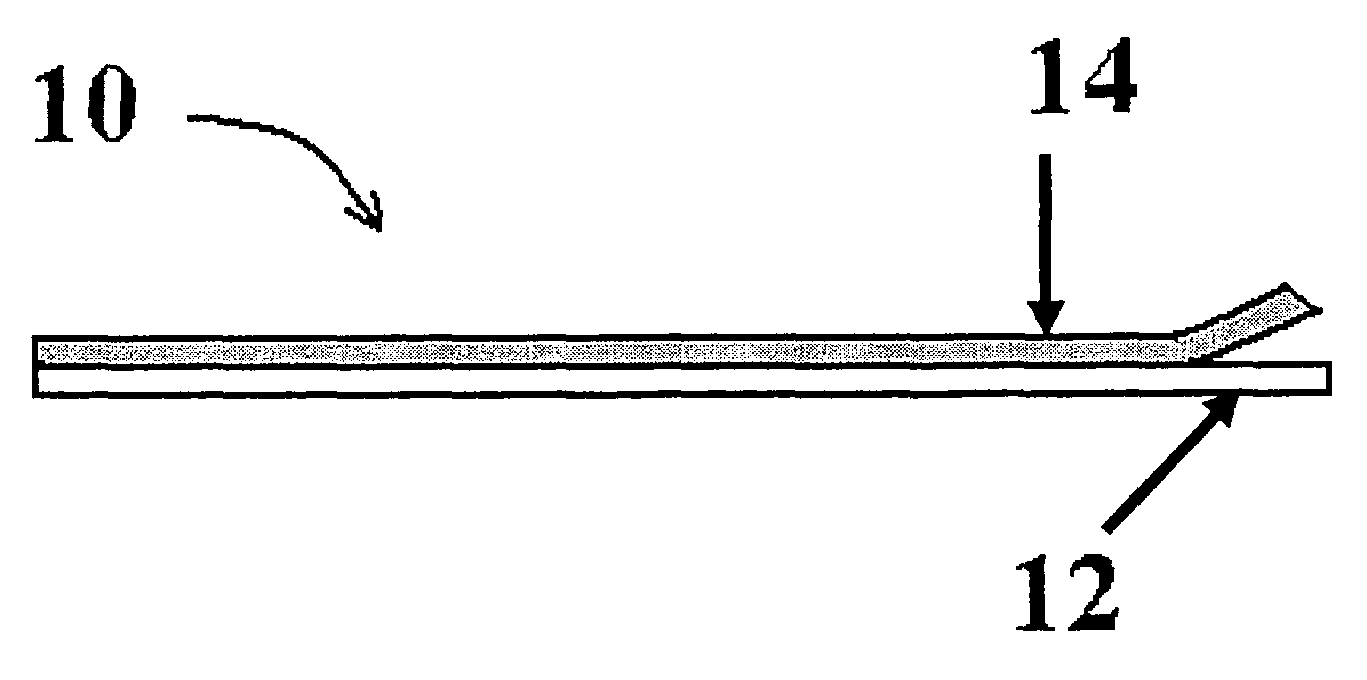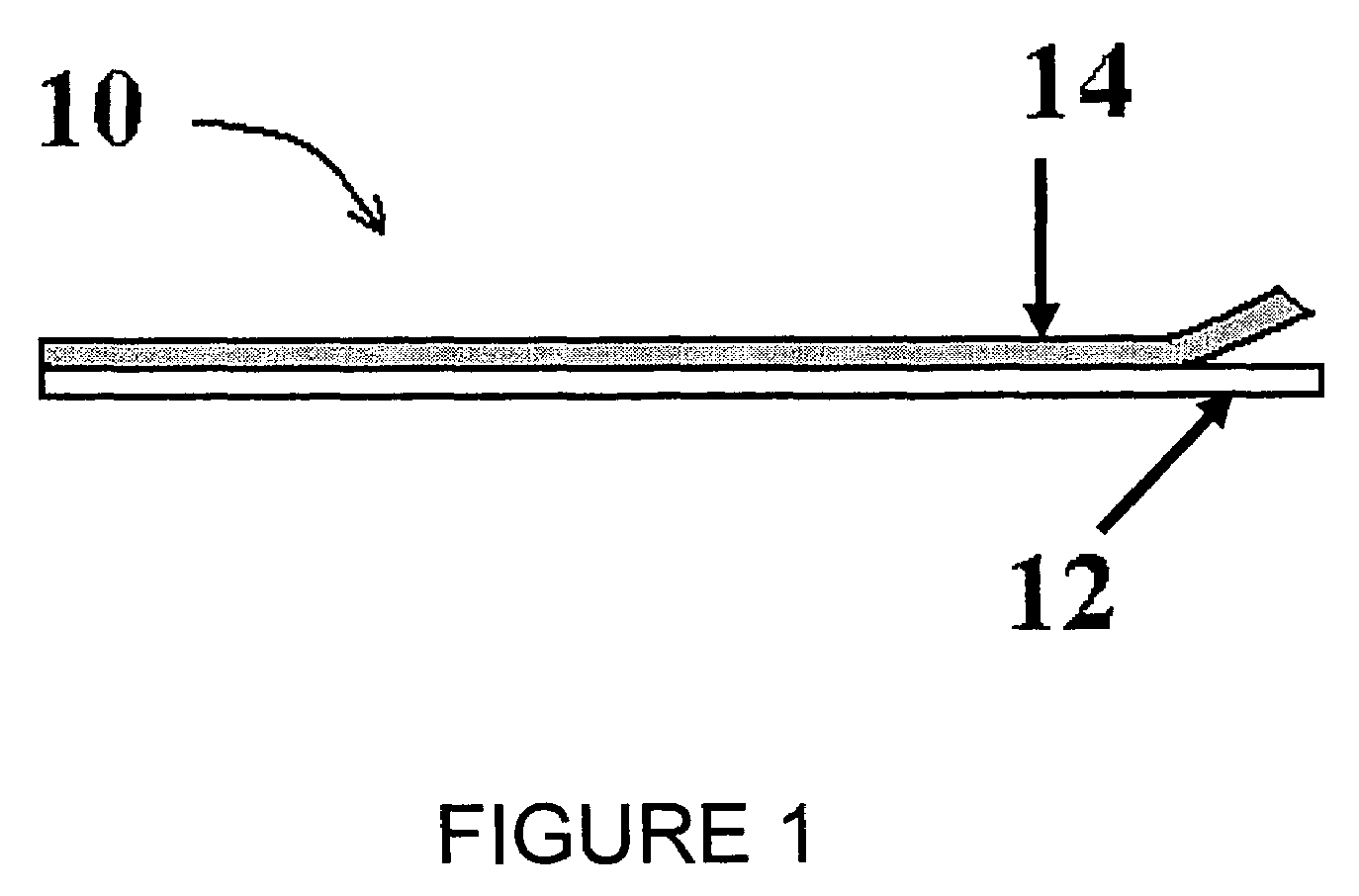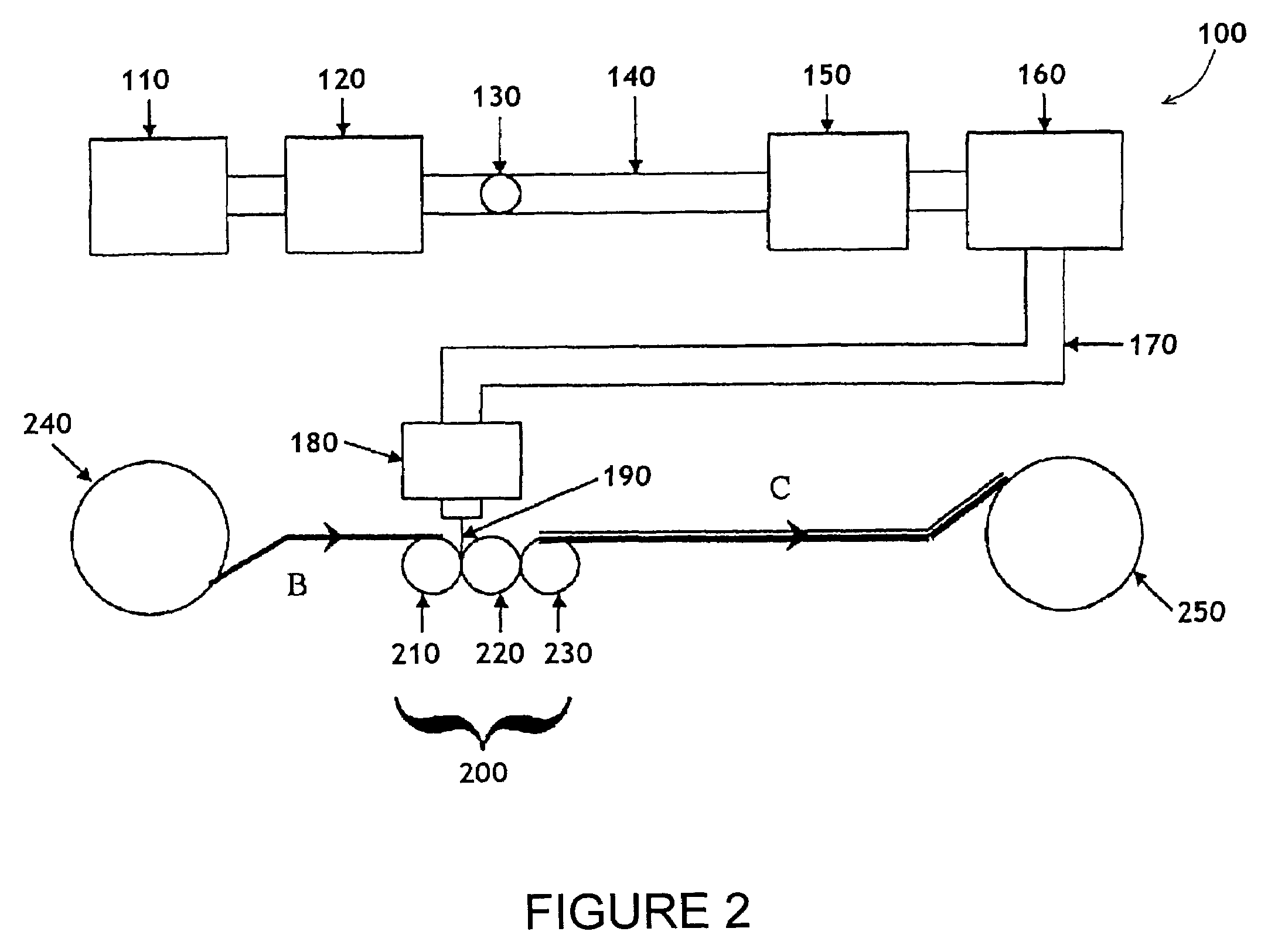Heat-reflective nonwoven liner material
a non-woven liner and heat-reflective technology, applied in the direction of stoppers, weaving, other domestic articles, etc., can solve the problems of difficult sew, noisy foil, complex production of conventional textile fabrics, etc., and achieve the effects of easy sew, low cost, and qui
- Summary
- Abstract
- Description
- Claims
- Application Information
AI Technical Summary
Benefits of technology
Problems solved by technology
Method used
Image
Examples
Embodiment Construction
[0019]The present invention now will be described more fully hereinafter with reference to the accompanying drawings, in which preferred embodiments of the invention are shown. This invention may, however, be embodied in many different forms and should not be construed as limited to the embodiments set forth herein; rather, these embodiments are provided so that this disclosure will be thorough and complete, and will fully convey the scope of the invention to those skilled in the art. Like numbers refer to like elements throughout.
[0020]In accordance with an embodiment of the present invention and as illustrated in FIG. 1, a metallized garment interlining fabric 10 includes a continuous filament nonwoven layer 12 and a metallized thermoplastic film layer 14 that will characteristically exhibit a reflectivity of at least about 0.85.
[0021]The continuous filament nonwoven layer will typically be formed of a thermoplastic polymer. Typical thermoplastic polymers that may be used to form ...
PUM
| Property | Measurement | Unit |
|---|---|---|
| length | aaaaa | aaaaa |
| reflectivity | aaaaa | aaaaa |
| heat reflective | aaaaa | aaaaa |
Abstract
Description
Claims
Application Information
 Login to View More
Login to View More - R&D
- Intellectual Property
- Life Sciences
- Materials
- Tech Scout
- Unparalleled Data Quality
- Higher Quality Content
- 60% Fewer Hallucinations
Browse by: Latest US Patents, China's latest patents, Technical Efficacy Thesaurus, Application Domain, Technology Topic, Popular Technical Reports.
© 2025 PatSnap. All rights reserved.Legal|Privacy policy|Modern Slavery Act Transparency Statement|Sitemap|About US| Contact US: help@patsnap.com



